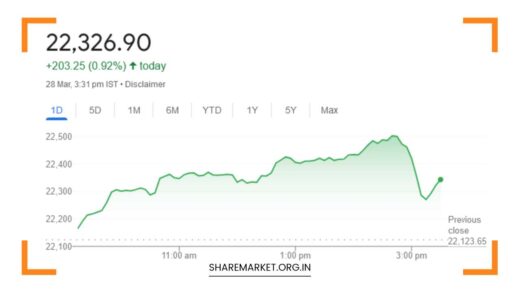What Are the Disadvantages of Investing in Gold?

Disadvantages of Investing in Gold
What Are the Disadvantages of Investing in Gold?
Gold has long been celebrated as a safe haven asset and a reliable store of value. For many Indians, investing in gold is a traditional and preferred choice.
However, before committing significant portions of your investment portfolio to gold, it’s crucial to understand its disadvantages.
Here, we delve into the various drawbacks associated with gold investments, helping you make an informed decision.
Lack of Income Generation
One of the primary disadvantages of investing in gold is that it does not produce any regular income. Unlike stocks, which offer dividends, or bonds, which provide interest payments, gold investments are entirely dependent on price appreciation for returns. This means that if the price of gold does not increase, your investment does not yield any income.
The absence of regular income can be a significant drawback, especially for those who rely on investment income for financial stability. Unlike other assets that can generate passive income, gold only appreciates or depreciates based on market conditions. This characteristic may be unsuitable for investors seeking consistent cash flow.
High Opportunity Cost
Investing in gold often involves a high opportunity cost. When you allocate capital to gold, you forego the potential gains from other investment avenues that might offer higher returns. Historically, assets like stocks, mutual funds, and real estate have provided better returns over the long term compared to gold.
For instance, the stock market has shown considerable growth over decades, and real estate investments often appreciate in value while generating rental income.
By choosing to invest in gold, you might miss out on these higher-yielding opportunities. This opportunity cost can be substantial over time, particularly if gold’s performance lags behind other asset classes.
Price Volatility
Gold is often considered a stable asset and a hedge against inflation, but its price can be quite volatile. Various factors, such as geopolitical tensions, economic conditions, and investor sentiment, can cause significant fluctuations in gold prices.
This volatility can result in considerable losses if you need to sell your gold investment during a downturn.
The price of gold is influenced by a myriad of factors, including currency fluctuations, interest rates, and global economic events.
This inherent volatility can be a risk for investors who require stable returns and are uncomfortable with the potential for large swings in value.
Storage and Insurance Costs
Investing in physical gold necessitates secure storage, which can incur additional costs. If you choose to store gold at home, you’ll need to invest in a high-quality safe and potentially enhance your home security. Alternatively, you might store your gold in a bank safe deposit box or a specialized vault, both of which come with their own fees.
Moreover, insuring your gold against theft, loss, or damage is another expense that can impact your overall returns. The costs associated with storage and insurance can add up, particularly for substantial quantities of gold, thereby eroding the investment’s profitability.
Liquidity Concerns
While gold is generally regarded as a liquid asset, converting it into cash quickly, especially in large quantities, can pose challenges. The process of selling physical gold might involve finding a buyer willing to pay the current market price, which can be time-consuming and cumbersome.
In times of economic stress or during market downturns, the liquidity of gold can diminish. Finding a buyer who offers a fair price might take longer than anticipated, which can be problematic if you need immediate access to cash. This liquidity issue can be a significant disadvantage for investors who may need to sell their gold holdings on short notice.
Hidden Costs
Buying and selling gold often involve hidden costs that can impact your overall returns. These costs include making charges, purity charges, and various fees levied by jewelers or dealers. Such expenses are particularly relevant for smaller investments where the impact of these fees can be proportionally larger.
For example, when purchasing gold jewelry, making charges can significantly increase the cost. Similarly, when selling gold, dealers might offer a price below the market rate, which can further affect your returns. These hidden costs can reduce the net profit from your gold investment and should be carefully considered.
Taxation
The taxation on gold investments can be complex and varies based on the form of gold and the holding period. Short-term gains from gold investments are taxed as regular income, which can be higher than the tax rates for long-term capital gains. Long-term capital gains on gold are subject to lower tax rates, but determining what qualifies as a long-term holding can be confusing.
The tax implications of gold investments can vary depending on the jurisdiction and the specific tax regulations in place. Investors should seek professional advice to understand the tax treatment of their gold investments and ensure compliance with relevant tax laws.
Inflationary Impact
Gold is often viewed as a hedge against inflation, but its effectiveness in preserving purchasing power can be debated. While gold has historically retained value during inflationary periods, its price increase might not always keep pace with the rate of inflation.
If inflation outstrips the rise in gold prices, the real value of your gold investment may decline. This can be particularly problematic if your primary reason for investing in gold is to protect against inflation. Evaluating gold’s performance relative to inflation is essential to assess whether it meets your financial objectives.
Limited Diversification Benefits
Gold is often used to diversify investment portfolios, but its benefits in this regard may be limited. During times of economic stress or market volatility, gold and other asset classes, such as stocks, might move in the same direction, reducing the effectiveness of gold as a diversifier.
Diversification aims to spread risk across various asset classes to reduce overall portfolio volatility. However, gold’s correlation with other assets can fluctuate, and in certain scenarios, it may not provide the expected benefits of diversification. Investors should carefully consider how gold fits into their overall investment strategy.
Psychological Impact
Investing in gold can be highly emotional. Many investors hold onto their gold investments even when prices are falling, hoping for a future recovery. This emotional attachment can lead to suboptimal investment decisions, such as delaying the sale of gold during a downturn.
The psychological impact of gold investment can affect decision-making and lead to holding onto investments that may not align with your financial goals. Recognizing and managing these emotional factors is important to making rational and effective investment choices.
Environmental Concerns
The gold mining industry has been criticized for its environmental impact. Activities such as deforestation, water pollution, and habitat destruction are associated with gold mining. Additionally, there have been concerns about human rights abuses in some mining operations.
Investing in gold indirectly supports these activities, which can be a significant ethical concern for some investors. Evaluating the environmental and social implications of gold investments is important for those who prioritize responsible investing practices.
Regulatory Risks
Gold investments are subject to regulatory risks that can affect their attractiveness and profitability. Governments may introduce new regulations or taxes on gold, impacting its market dynamics. Changes in import duties, Goods and Services Tax (GST), or other levies can influence gold prices and investment returns.
Staying informed about regulatory changes and understanding their potential impact on your gold investments is crucial. Regulatory risks can introduce uncertainty and affect the overall stability of gold as an investment option.
Counterfeit Risk
Physical gold is susceptible to counterfeiting. Buying gold from unreliable sources or without proper verification increases the risk of purchasing fake or impure gold. This risk can be mitigated by buying from reputable dealers and conducting due diligence.
Counterfeit gold can result in financial losses and damage to your investment portfolio. Ensuring the authenticity and purity of gold before purchase is essential to avoid potential issues and maintain the value of your investment.
Limited Use Cases
Unlike other assets such as real estate or stocks, gold has limited practical uses. While it serves as a store of value and a hedge against inflation, it does not generate income or provide utility in the way that other investments can.
The lack of functional utility makes gold less versatile compared to other asset classes. Investors seeking assets that offer additional benefits beyond value preservation may find gold lacking in this regard.
Alternative Investment Options
There are numerous alternative investment options available that offer potentially higher returns, lower risk, and better liquidity compared to gold. Assets such as stocks, mutual funds, bonds, and real estate often present more dynamic opportunities for growth and income generation.
Exploring these alternative investment options can help diversify your portfolio and potentially enhance returns. Evaluating the relative advantages of different asset classes can provide a more comprehensive approach to investment planning.
Final Remarks
Gold has its place in a diversified investment portfolio, but understanding its limitations is crucial for making informed decisions.
The disadvantages of investing in gold include lack of income generation, high opportunity cost, price volatility, and additional costs related to storage, insurance, and hidden fees.
Additionally, issues such as taxation complexity, limited diversification benefits, psychological impact, and environmental concerns further illustrate the challenges associated with gold investments. Regulatory risks and counterfeit concerns also contribute to the potential drawbacks.
When considering gold as an investment, it’s important to weigh these disadvantages against your financial goals, risk tolerance, and investment horizon.
Diversifying your investments across various asset classes can help mitigate the risks associated with gold and enhance the overall stability and growth potential of your portfolio.
Important Note: This article provides general information and should not be considered financial advice. It is recommended to consult with a financial advisor before making any investment decisions.

















